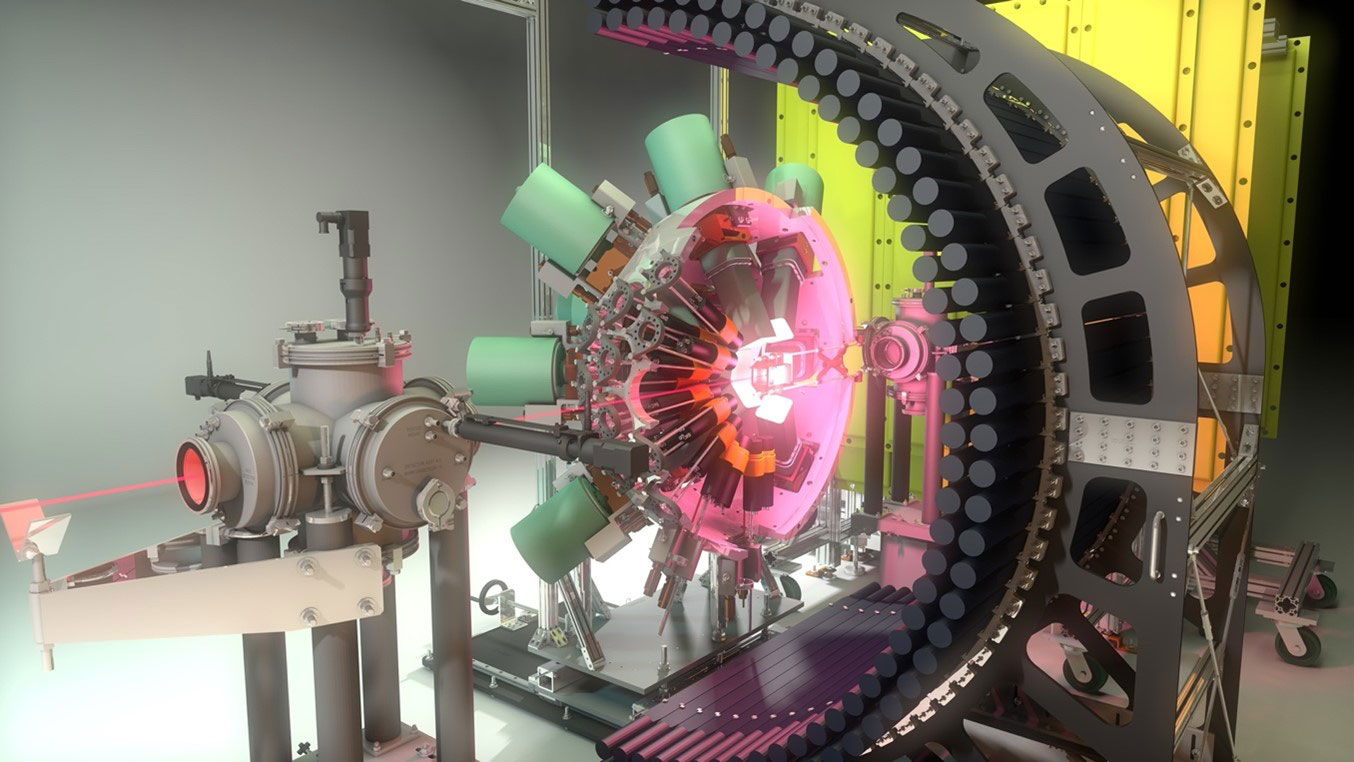Long-Lived State in Radioactive Sodium Discovered at the Facility for Rare Isotope Beams
A newly discovered excited state in radioactive sodium-32 has an unusually long lifetime, and its shape dynamics could be the cause.

The Science
Sometimes a single atomic nucleus can take many shapes, shifting between spherical and deformed states. In nuclei with “closed shells,” where the shells around the nucleus are completely filled with either neutrons or protons, scientists expect nuclei to be spherical in their lowest energy configuration, or ground state. However, these nuclei can change shape as they gain energy and enter deformed excited states. For exotic nuclei, these deformed states can eventually replace the spherical state as the ground state. Researchers refer to the nuclei in which this phenomenon occurs as being on an “island of shape inversion.” The high-energy spherical states for nuclei in the island of shape inversion have been hard to observe. But now scientists have discovered an unusually long-lived excited state, or isomer, in radioactive sodium-32 (32Na). Its surprisingly long-lived excited state could be a result of these shape dynamics.
The Impact
The radioactive nucleus 32Na lies at the center of an island of shape inversion. Its neighbor, magnesium-32, was one of the first examples of shape inversion. Initially, scientists deemed shape inversion to be the result of a collapse of the nuclear shell model of how protons and neutrons arrange themselves inside the atomic nucleus. The shell model has several well-established magic numbers, where either protons or neutrons fill complete shells of a nucleus. Scientists now interpret shape inversion as a crossing of deformed and spherical configurations. Scientists are evaluating two possible scenarios for an isomer in 32Na: one that preserves the two distinct shapes and one that does not. While the most state-of-the-art theory suggests the latter, the discovery of this isomer is an opportunity to resolve this long-standing nuclear structure inquiry with future measurements.
Summary
This study analyzed data from the first experiment at the Facility for Rare Isotope Beams (FRIB) at Michigan State University. The experiment used the FRIB Decay Station initiator. The research involved 66 participants from 20 universities and national laboratories, including Lawrence Berkeley National Laboratory, Florida State University, Mississippi State University, Oak Ridge National Laboratory, and the University of Tennessee at Knoxville. A beam containing radioactive 32Na nuclei stopped in an implant detector that recorded arrival times. An array of high-purity germanium detectors detected two gamma rays. The time distribution between the gamma rays and 32Na implants revealed the presence of an unusually long-lived excited state, or isomer.
This discovery provides a gateway for resolving an unsettled question about structures and shapes of exotic, neutron-rich nuclei. This new isomer could result from a spherical or deformed shape; both possibilities decay to a deformed ground state. FRIB plans to increase primary beam power from 1 to 10 kilowatts. The more intense beams will enable an experiment that distinguishes between the two shape possibilities.
Contact
Timothy Gray
Oak Ridge National Laboratory
graytj@ornl.gov
Funding
Funding for this work was provided by the Department of Energy (DOE) Office of Science, Office of Nuclear Physics, the DOE National Nuclear Security Administration, and the Stewardship Science Academic Alliances Program. Support was also provided by the U.S. National Science Foundation (NSF) and the NSF Major Research Instrumentation Program. This research used resources of the Facility for Rare Isotope Beams, a DOE Office of Science user facility.
Publications
Gray, T.J., et al. (FDSi Collaboration), Microsecond Isomer at the N=20 Island of Shape Inversion Observed at FRIB. Physical Review Letters 130, 242501 (2023). [DOI: 10.1103/PhysRevLett.130.242501]
Related Links
Long-lived quantum state points the way to solving a mystery in radioactive nuclei, Oak Ridge National Laboratory newsrelease
Highlight Categories
Program: NP
Performer: University , DOE Laboratory , SC User Facilities , NP User Facilities
Additional: Technology Impact , Collaborations , NNSA , Non-DOE Interagency Collaboration



